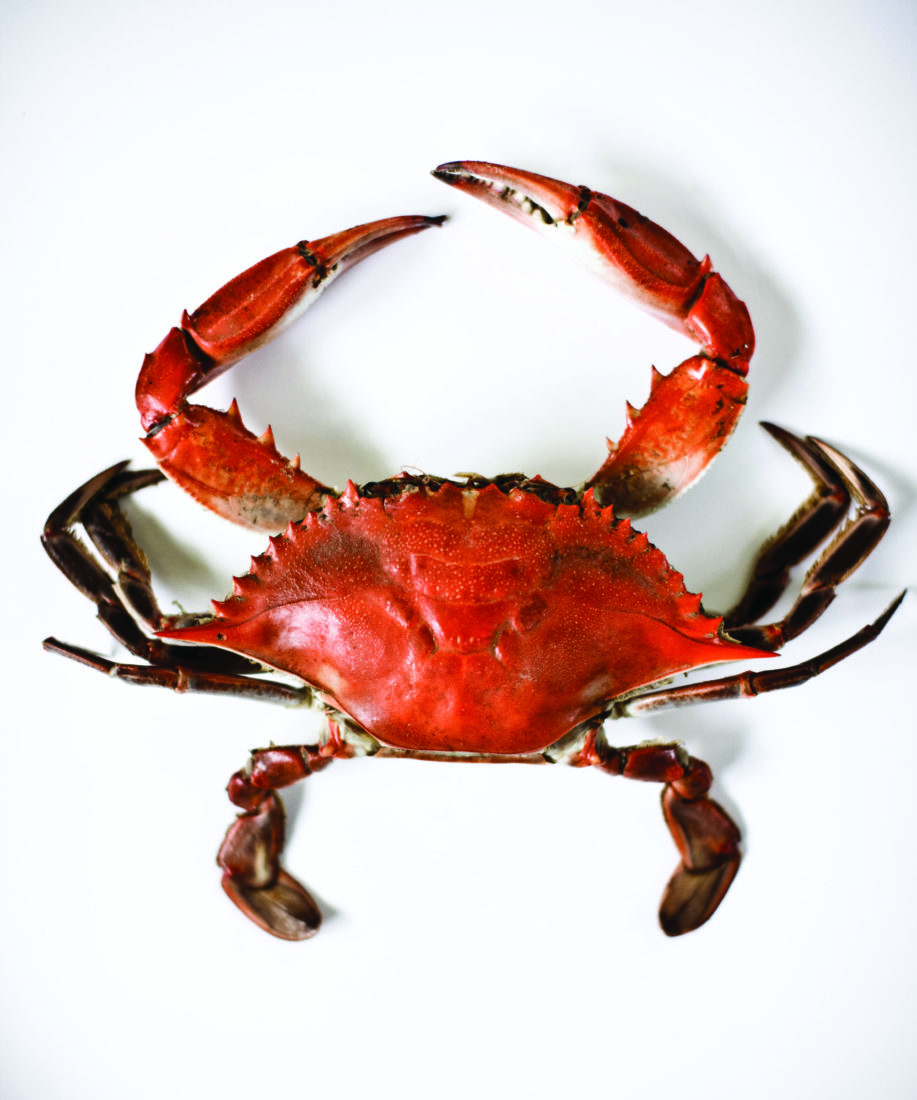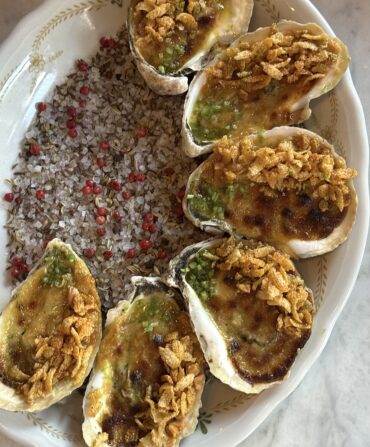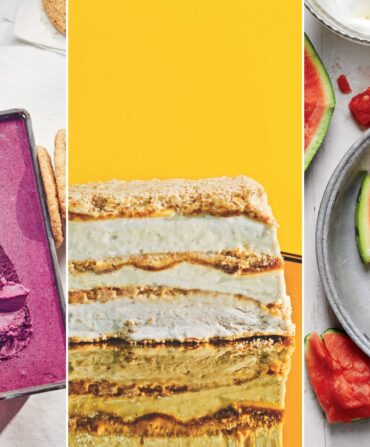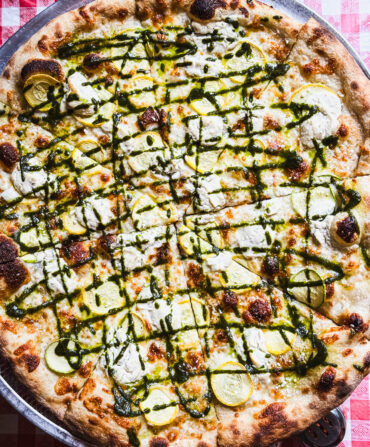SEC football, mayonnaise brands, how to clean a cast-iron skillet—Southerners love a good debate. So, when we asked ten of the South’s most passionate chefs whether they prefer their blue crabs steamed or boiled, it wasn’t surprising that things got a little…heated. Here we present their cases for superior crustacean preparation.
Team Boil
Lock in Flavor
“At our camp, my dad always puts out crab traps. And if we’re lucky, we wind up with a shit-ton of blue crab before the weekend is over. Where I’m from, we boil our seafood—crab, shrimp, and crawfish. Boiling results in more flavor because the crab soaks it all in and absorbs it. When you steam it, the flavor just stays on the surface. My favorite way to eat blue crab is my dad’s camp stew. You can’t get this kind of flavor by steaming.”
—Isaac Toups, author of Chasing the Gator, and chef and owner at Toup’s Meatery in New Orleans
Even Seasoning Made Easy
“The water is a seasoned bath for the crabs. Boiling ensures the seasoning gets evenly distributed throughout the crab and keeps it moist. If you steam the crabs all the seasoning ends up on the outside shell and eventually on your fingers. It’s not like Cheeto dust, either —you don’t want to lick it off. That’s just nasty!”
—Michelle Weaver, executive chef at Charleston Grill in Charleston, South Carolina
No Rubbery Results
“Blue crab is sweet with a hearty texture, and when you steam them, you lose that. Because steaming is at a much hotter temperature (up to 600 degrees), you wind up getting a rubbery texture. Water boils at only 212 degrees, so that preserves the great texture blue crab is known for.”
—Brian Landry, former spokesperson for the Louisiana Board of Seafood, and owner and executive chef at Jack Rose in New Orleans and Marsh House in Nashville
You Can Repurpose the Stock
“One of my best friends from culinary school and I used to visit his family home in Nanjemoy, Maryland. It’s directly on the upper end of the Potomac River. We boiled blue crab (and shrimp)—and I’ll always stick to that method because it delivers a better result by introducing the broth’s flavors to the crab, leaving a wonderfully flavored stock, which later can be turned into a soup or a killer dipping sauce.”
—Drew Van Leuvan, executive chef of Ecco Buckhead in Atlanta
It’s Just More Consistent
“Steaming blue crabs in the South is blasphemy! I understand the mechanics and thermodynamics to it, but what’s the point?! You steam ’em, and then you have to sprinkle seasoning all over them and hope that while you’re eating them, a little bit of the seasoning gets on your hands and maybe, just maybe, seasons the crab meat a bit. Maybe you get a good bite, and maybe nothing. In the real South we boil crabs, not ’cause we are heathens and don’t have contraptions to steam, but because we like to infuse flavor into the meat while we cook. Thus, we have crabmeat that tastes seasoned every time…all the time.”
—Erik Niel, executive chef at Easy Bistro & Bar in Chattanooga

Team Steam
It’s Quicker (and Better!)
“My girlfriend, being from Maryland, has made sure I always do this the correct way. Steam the crabs with a good light beer. If you can find it, use National Bohemian (Natty Boh), and Old Bay. That’s all you need. Steam is obviously a higher temperature than boiling water, therefore it cooks the crab faster and more efficiently without the concern of water logging.”
—Frank Bradley, executive chef at Hendrix in Columbia, South Carolina
The Crab Shines
“In my opinion, steaming locks in the full flavor of the crab. When boiling you get a lot of flavor from the seasonings, which sometimes can take away from the original taste of the crab. Boiling also results in a wet crab experience, which is sometimes messier and more difficult to eat.”
—Derick Wade, executive chef of the Darling Oyster Bar in Charleston, South Carolina
You’ll Resist Overcooking
“Steaming is a great way to maximize sweetness as well as texture for the delicate, lush meat. Sometimes when boiling you run the risk of overcooking, and it can be difficult to extract meat if done improperly. By steaming the shell, it acts as an oven, allowing the crabmeat to cook in its natural juices. This equals max crab flavor!”
—Blake Hartley, executive chef of Lapeer Seafood Market in Alpharetta, Georgia
You Can Subtly Tweak the Flavor
“Steaming is a gentler, more controlled way of cooking, and it allows aromatics to be a lot more nuanced—whether you’re using something as bold as Old Bay, or as mild as chamomile tea. I also find that steaming produces more supple, flavorful crabmeat. It allows the crab flavor to stay inside the shell instead of leaking out into cooking water. Plus, dropping a crab into a boil automatically causes its body to seize up and its albumin [protein] to rupture, which can make meat tough and chewy. Steaming is definitely the way to go if you want more tender, flavorful crab.”
—Finn Walter, chef and owner of the Nicolett in Lubbock, Texas
It’s an Excuse to Crack a Beer
“Although boiling will help get the aromatics from the liquid into the crab, it can become overwhelming. It can end up producing a type of watery soup in your crab meat. With steam, you get pure, delicious crab. Also, with steaming, you have more control over the flavors on the crab. I steam mine with beer—a pilsner or a lager does great. I add one or two beers to a stock pot, season the beer with herbs and seasonings, and bring it to a boil. Next, I add salt and more seasoning to the crabs before I put them in the basket. Then steam in a stock pot for about ten to twenty minutes. It’s so simple and so delicious.”
—Jessica Shillato, chef and co-owner of Spotted Salamander, in Columbia, South Carolina








